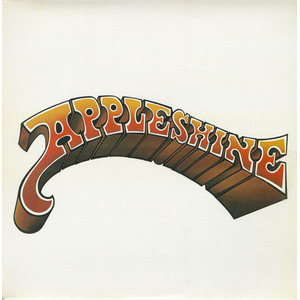Information/Write-up
Appleshine emerged in Calgary in the early 1970s, a country-rock group built around the songs and steady bass work of Harvey Sawatzky, whose writing gave the band a warm, melodic core. The project took shape after Sawatzky connected with Bruce Innes, fresh from his run with the Original Caste, who brought both studio experience and a distinctive acoustic touch. Together they began assembling a band capable of moving comfortably between country, soft rock, and the show-band polish that was still very much part of Western Canada’s live circuit.
The addition of vocalist and dancer Manni Fink gave Appleshine its visual spark. Fink had come out of the 18-piece Calgary show band Stratus Faction, a high-energy ensemble that recorded several CBC specials in 1973 at the Manitoba Theatre Centre. Her stage presence, honed in large-format productions, paired naturally with the band’s strong harmony approach. Fink’s profile grew quickly; by the mid-1970s she was crowned Miss Calgary and was runner-up at Miss Canada, lending the group the kind of front-stage charisma that set them apart from many of their Alberta peers.
Guitarist and vocalist Peter Marley, a versatile player who later became a respected Calgary music instructor, shaped the group’s arrangement style and played a key role in broadening their sound. The rhythm section gained depth with Bill McCormick on percussion and vocals, while pedal-steel player Mark “Smoky” Schauer added the country edge that became a defining part of Appleshine’s audio identity.
The group toured heavily across Western Canada and into Ontario between 1973 and 1982, working clubs, halls, cabarets and show lounges. They earned a reputation as a dependable live act with strong vocals, clean musicianship and a crowd-friendly repertoire built around Sawatzky’s originals and well-chosen covers.
Their self-titled album was recorded in Calgary at Peter Bentley’s studio, with Bruce Innes handling production and contributing guitar and piano. The record brought together Sawatzky’s material with songs that reflected the band’s range, capturing a mix of country ballads, rock-leaning numbers and harmony-driven arrangements. The single Kentucky Moonshine received radio play nationwide and stands as the group’s best-known track.
Though Appleshine never achieved major national breakout, the band played an important role in the Alberta country-rock landscape of the 1970s, bridging the gap between show-band professionalism and emerging singer-songwriter sensibilities. Their lineup remained close-knit, and each member carried forward a long personal connection to the region’s music community. In the years after the group slowed its activities, Sawatzky moved into the high-tech industry while continuing to perform occasionally in Vancouver, Innes settled in Idaho and continued his work as a touring artist, Marley remained active as a performer and teacher in Calgary, and Fink shifted into real estate in the Okotoks area.
The Appleshine album, recorded at Utopia Sound Studio and supported by a strong Calgary production team, remains a sought-after document of the city’s mid-70s music scene. Its mix of heartfelt songwriting, seasoned players and the unmistakable presence of Bruce Innes has ensured its place as a cherished regional classic within the Museum of Canadian Music archive.
-Robert Williston
Manni Fink: vocals
Harvey Sawatzky: bass, vocals
Peter Marley: acoustic guitar, electric guitar, vocals
Bill McCormick: percussion, vocals
Mark “Smoky” Schauer: pedal steel
Bruce Innes: acoustic guitar, piano
The Apple Chords: backup vocals
Vocal arrangements by Peter Marley
Produced by Bruce Innes
Production co-ordination by Dennis Plindin
Engineered by Richard Harrow
Recorded at Utopia Sound Studio, Calgary, Alberta
Cover design by Dianne Elliott (Creative Associates)
Cover photography by Martin Renk
Special thanks to Richard Harrow
Management by Dennis Plindin, Creative Associates
Calgary, Alberta



No Comments